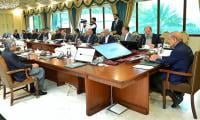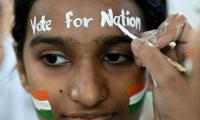The events of May 22, 2020 will be indelibly imprinted upon the nation’s consciousness – a devastating tragedy in already tragic times.
The tragedy of the PIA plane crash was made worse by the media’s reporting of the incident. Media reporting in times of crises is essential, but the manner in which it was conducted in this instance is extremely unfortunate.
One must think in a humane way and not infringe the human dignity of those involved in such tragic accidents. Images, videos and other content should be picked keeping in mind the sensitivity and privacy that the situation demands. The consumers of such content are also to blame. There is a selfish curiosity that accompanies headline news.
Upon hearing the news myself, I started to think, how many people died? Do they know what caused the crash? Did anyone survive? While sitting with my parents in the lounge, I told my father to change the channel to one where they were reporting live from the scene of the crash. We have become used to thinking we deserve to know this information. In doing so, I overlooked the pain of the victim’s families who knew their loved ones were on the flight and were anxiously awaiting any credible news.
Media reporting in times of crises has become a competition about who will put out information first, who can get closest to the scene of the incident and who has the most striking headline. Consuming such content might be tolerable for those who are unrelated to the tragedy. However, the audience extends to those who are directly affected by the incident. A list of passengers was read out on television without any regard for their privacy. A fake image of the plane also started doing rounds on television. While we are producing and consuming this content, it is time to sit back and think at what cost this is done.
The Pakistan Electronic Media Regulatory Authority was established under the Pemra Ordinance 2002. It has the authority to regulate and give licences to private television and radio channels in Pakistan. Pemra devised the Electronic Media (Programmes and Advertisements) Code of Conduct 2015. This Code of Conduct contains provisions dealing with coverage of accidents, violence, crime or national disasters. Decisions about airing information should be taken in consideration of the law. However, the implementation of this code remains a consistent problem.
The code states, “Unnecessary details and footages of gory scenes including bloodshed and dead bodies shall not be aired.” The media channels completely disregarded this provision and did not hesitate in airing explicit and invasive footage repeatedly. In particular, a video of one passenger being rescued from the scene of the crash was circulating on multiple media channels.
The code goes on to say that media channels must ensure, “reporting of incidents of crime, accident, natural disaster or violence does not create hurdles in dispensation of the duties of the law enforcement agencies, rescue agencies, hospitals and doctors, etc.”
The primary focus lies in the rescue efforts carried out by first responders. The responsibility of journalists extends to respectfully collecting information without causing any disruption. Live reporters attempted to get as close to the scene of the crash as possible.
Additionally, the code states, “During any on-going rescue or security operation, identity and number of victims or other important information shall not be revealed unless the same is warranted by the rescue or security agency incharge of the operation.” It was only a matter of minutes before crucial details such as the list of passengers, images and videos of those injured on the ground, live videos of the remains of the plane, videos of the plane crashing and a recording of the pilot were aired on television.
The code goes on to say, “Licensee shall not air speculative or biased reporting that may compromise any security operation.” After the crash, speculation was rife about survivors. Soon afterwards, different media channels started giving contrasting figures about the number of survivors. As a result of these reports, there are countless stories of victim’s families going from hospital to hospital to see if their loved ones were one of the survivors.
Journalists must be conscious of the impact their news has and should ensure verification of reports before informing the public. Silence is better than speculation.
The Pakistan Federal Union of Journalists (PFUJ) has also drafted a code of ethics for the Pakistani media. It is important to have regard to the relevant law and available guidelines. Two different media channels might reach different conclusions as to what they deem appropriate in the circumstances. However, like most situations, the importance lies in the process. All channels must have a process in place whereby they evaluate the information available and make an assessment about whether it is in conformity with the law.
The role of the media in situations of crises is to keep citizens informed. But the journalistic duty to keep people informed does not justify the careless and insensitive reporting that took place. The news of the crash would have reached the public irrespective of the exaggerated method of reporting.
We must not get comfortable with this kind of reporting. For the sake of ethical journalism, and for the sake of basic humanity, we must reframe the narrative.
The writer is a law student.
A woman walks past a building of the International Monetary Fund. — AFP/FileThe annual and spring meetings of the...
Late Benazir Bhutto's daughter Asifa Bhutto Zardari addresses the Christian community in Bihar Colony on January 23,...
Representational image. — PexelsWater is an important scarce natural resource that is required for several everyday...
Pakistani employees of online marketplace company Kaymu at work in Karachi. — AFP/FileThe true spirit of development...
India uses Afghanistan as a backstage area to carry out terrorist attacks against Pakistan
Another report by the Pakistan Institute of Peace Studies states that 78 per cent of attacks have been carried out by...







